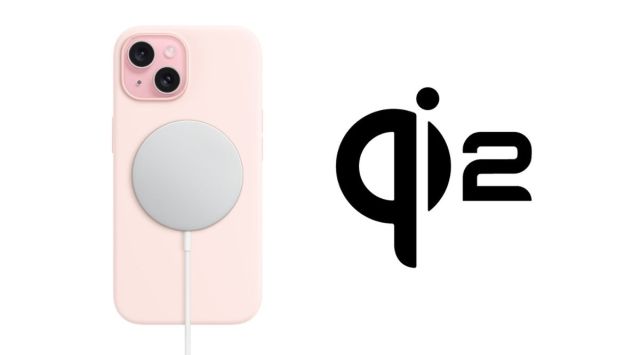Wired charging can juice up your phone in a flash, reaching speeds of over 100W, but it also comes with a lot of hassle. The act of plugging and unplugging your phone is not exactly a joyride. Not to mention ports that can get clogged with dust, making your phone charge slow. Or they can get soaked with water, making your phone charge never.
Wireless charging solves these problems in a snap. Charging becomes as simple as placing your phone on a charging surface and letting it take it from there. But even as it eliminates these problems, it somehow creates new ones. Picture this: you put your phone on your charger and doze off thinking you’ll wake up to a fully charged battery – only to find out that the phone was a few millimetres off-centre and didn’t charge at all.

Sure, magnetic wireless charging exists too, but it’s a bit of a chaos with the lack of a universal standard. Qi2 may change that though, helping push wireless charging to mainstream adoption. But what is Qi2, how does it work, and what do you need for it to work? We answer these questions below.
What is Qi2 and how does it work?
First, let’s understand how wireless charging works. The tech leverages electromagnetic induction, which transfers energy from a transmitter coil in the charger to a receiver coil in the device. The coils are tuned to the same frequency, creating a magnetic field that allows the energy to flow.
Qi2 is a new wireless charging standard that takes this technology to the next level. Qi2 uses magnetic alignment and a different frequency to achieve 15W fast charging for compatible phones. The magnets help the device and the charger align perfectly, increasing the efficiency and reducing the charge time. Qi2 also supports charging multiple devices at once, as well as charging through thicker cases and metal objects.
Qi2 was developed by the Wireless Power Consortium (WPC), a group of companies that promote wireless charging standards. The WPC unveiled Qi2 during CES 2023 as “the latest advancement in charging technology.”
You might be surprised to learn that Apple made the biggest contribution to Qi2, based on its MagSafe technology. MagSafe is a magnetic charging system that Apple introduced for its iPhone 12 series. The WPC adopted MagSafe as the basis for Qi2, creating the Magnetic Power Profile (MPP) that defines how Qi2 works.
Story continues below this ad
Qi2 is expected to become the industry standard for wireless charging, as it offers faster, safer, and more convenient charging for smartphones, mobile devices, and even wearables. Qi2 is compatible with existing Qi chargers and devices, but you will need a Qi2-certified charger and device to enjoy the full benefits of Qi2.
How is Qi2 different from Qi?
The original Qi standard requires your phone and charger to be very close and aligned, or else the charging efficiency drops dramatically. That means you can’t just toss your phone on the pad and expect it to charge quickly. Qi2 is a new standard that uses magnets to keep your phone and charger in perfect position, so you can enjoy faster and more reliable wireless charging.
What are the benefits of using Qi2 magnetic charging?
Qi2 is supposed to be faster, safer, more compatible, more forward-thinking, and more sustainable than any other wireless charging standard. Here’s why:
Speed: Qi2 charges up to 15 watts, while Qi charges anywhere from 5 watts to 15 watts. That means you can get a full charge in half the time or less. And because Qi2 uses magnets to align the charging coils perfectly, it wastes less energy and generates less heat.
Story continues below this ad
Compatibility: Qi2 works with select iPhone 15 and other MagSafe-compatible devices. It’s also available to Android manufacturers to integrate into their future devices. That means you can use the same charger for different devices, or share your charger with your friends and family.
Safety: Qi2 protects your phone and your environment. It has enhanced foreign object detection, which means it only charges compatible devices and avoids accidents or damage.
Sustainability: Qi2 reduces waste and saves resources. Charging cables wear out quickly and end up in landfills. Wireless chargers don’t have that problem. They last longer and don’t need to be replaced as often.
What do I need to Qi2 charge my devices?
Unfortunately, since Qi2 was released only recently, there aren’t many phones you can get with support for the standard. In fact, the iPhone 15 series is the only set of Qi2-compatible phones at the moment.
Story continues below this ad
Still, Android phones are expected to follow suit with the inclusion of the standard soon. Perhaps one of the Chinese brands will beat the rest to the punch, like Xiaomi or OnePlus with their upcoming flagships. Or maybe Samsung will surprise us all with the Galaxy S24 next year. Until then, you’ll have to stick with the old-fashioned Qi chargers or stick with unwieldy cables.









